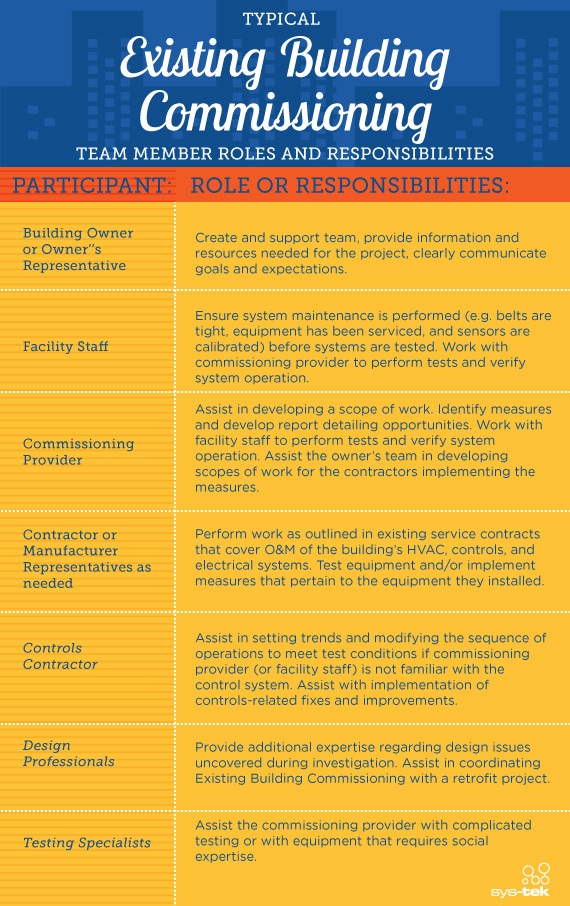Existing building commissioning best practices: Persistence phase
Nov 25, 2013
The final phase of an existing building commissioning project is known as the Persistence phase. During the Persistence phase, a series of new systems, tools, and resources is implemented with the sole purpose of supporting the persistence and ongoing performance improvement of a building after it has gone through commissioning.
The ongoing performance improvement of a facility should always be upheld to Current Facility Requirements. Following are some best practices to follow when entering the Persistence phase of an existing building commissioning (EBCx) project:
Benchmark the building’s energy use
Continuously monitoring a building’s energy consumption is an ideal way to measure ongoing success of an EBCx project. A building’s energy use should be compared to its energy use prior to EBCx and also to peer buildings in the same industry. For an extra performance boost, facility managers can implement rewards and recognition programs for staff who can demonstrate continuous improvements in energy use.
Monitor and track energy use
Facility staff who monitor and track energy use can identify and become familiar with a building’s patterns of energy consumption. Monitoring and tracking energy may be associated with improvements in energy use, especially when staff can take action on a real-time basis and prevent spikes in energy over the long term.
Monitor and track non-energy metrics
The monitoring and tracking of non-energy use in a building includes the examining of metrics such as occupant satisfaction, indoor air quality, and comfort calls. Comparing a building’s non-energy use before and after EBCx is an ideal way to recognize opportunities for ongoing improvement in a building.
Document changes using an operator’s log
Every major event that takes place in a building should be recorded into an operator’s log so facility staff can identify patterns in a building’s performance that can be applied toward continuous improvement. Examples of activity that should be documented into an operator’s log include maintenance and testing of systems, equipment replacement, and descriptions of major malfunctions and their resolutions.
Use the building automation system (BAS) and automated fault detection and diagnostic (AFDD) tools regularly
The BAS can help facility staff heighten awareness and persistence of certain facility improvement measures (FIMs), whereas when integrated with the BAS, the AFDD tools can help alert operators when faults are detected with systems, valves, sensors, and other sequences responsible for energy efficiency.
Implement ongoing EBCx
EBCx projects should be repeated every 3 to 5 years to ensure the most cost-effective, optimal performance for a building. EBCx can be conducted sooner if the building occupancy changes, undergoes significant usage changes, or degrades in performance.







